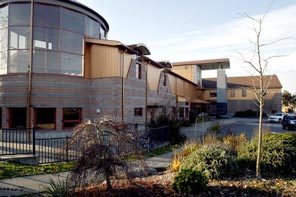The private contact info of 10,700 Seattle Public Schools students and 1,400 teachers ended up in the hands of a political marketing firm. How did that happen? Should it be allowed? A group of parents says No.
A number of Seattle Public Schools parents and teachers were recently shocked to read that the private contact information of 10,700 SPS children and 1,400 teachers had been given to a political marketing and polling firm by the school district.
In March, Seattle-based Strategies 360/DMA Marketing used the information to conduct a telephone poll for the Our Schools Coalition, a new organization created by the Alliance for Education. Out of this poll came an online petition. In its “Methodology,” 360/DMA explained that it had surveyed three groups -- teachers, parents and voters -- and that respondents from the first two groups “were randomly selected from lists for each segment provided by Seattle Public Schools.” (This sentence has since disappeared from the petition site.)
Who gave the district permission to share our children’s private information with a marketing firm?
The school district claims it did not in fact give the info to 360/DMA, but to Schools First and the Alliance for Education, which both made requests late last year. The Alliance, a funding and P.R. affiliate of the school district, used the info to send the district’s educators a critical report on teachers that it had commissioned. Schools First, an organization that runs school levy campaigns, sent SPS families a mailer urging them to support the February 2010 levies.
According to Schools First, a rogue staffer then passed the information on to Strategies 360/DMA on behalf of the Alliance for Education, bypassing the policy (and maybe even the law) on how this information can be shared.
This raises a number of questions and concerns for parents: Who gave the district the right to share our kids’ info with anyone in the first place? And precisely what information did they get?
According to the district, we did. Sort of. Apparently the district is legally permitted to share student "directory information" under FERPA, the Family Educational Rights and Privacy, unless parents or guardians sign an opt-out form the district sends home at the beginning of the school year. FERPA is a federal law that allows families access to their children’s educational records, but allows other entities access as well.
Disclosure of student information has been a hot-button issue for a while at the high school level because FERPA also allows military recruiters access to this data. Some parents have advocated for a military opt-out option, which the district offers on the high school FERPA form. So the district has created two forms, one for pre-k-8 and one for grades 9-12.
Think back to the beginning of the school year and the stack of inaugural paperwork your child came home with – sign-up sheets for after-school programs, volunteering and PTA membership, etcetera. Somewhere in there was the FERPA form. Maybe you saw it, maybe you didn’t. Maybe you handed it in, maybe you forgot.
The problem is, if a parent or guardian fails to return the form (or never receives it) the district interprets this as default consent. The district can then give the student’s “directory information to “anyone” who requests the information.
According to the school district, it gave Schools First “Directory information,” which in this case included: student name, parent name, school, grade, mailing address and phone number. But it can include a lot more:
"Directory Information: Under FERPA, SPS may release “directory” information to anyone, including but not limited to parent-teacher organizations, the media, colleges and universities, the military, youth groups, and scholarship grantors, unless you tell SPS that you do not want the information released. The following information is considered directory information: parent/guardian and student name, home address, home telephone number, home email address, student photograph or video, student date of birth, dates of enrollment, grade level, enrollment status, degree or award received, major field of study, participation in officially recognized activities and sports teams, height and weight of athletes, most recent school or program attended, and other information that would not generally be considered harmful or an invasion of privacy if disclosed."
It’s hard to imagine how the release of a child’s photo, video footage, home e-mail address, birth date, height and weight to a complete stranger could not amount to “an invasion of privacy” or potentially lead to some kind of harm.
How many families of Seattle Public Schools' 46,000 kids know these details is debatable. Chances are, most parents and teachers would not want their children's or their own contact information shared with just anyone.
Washington State law (RCW 42.56.070(9) bars anyone who requests such information from using it for commercial purposes. So the Seattle School District requires those making such a request to sign a “Declaration for Noncommercial Use.” Anyone who signs this form and then violates this stipulation can be penalized for “false swearing” (under state law WAC 44-14-06002(6).
Both the Alliance for Education and Schools First signed some version of this form. But 360/DMA did not. It’s not clear how it could have, since it is a commercial enterprise that was ostensibly hired and paid to conduct its poll using use the student contact info. The handover from the person at Schools First effectively bypassed this security measure.
What’s more, while some parents may have signed FERPA forms with the district consenting to sharing this info, they did not give Schools First or the Alliance permission to hand out their kids’ information to anyone they please, let alone a political marketing firm.
Also, the Our Schools Coalition poll has been criticized in the school community and blogosphere for harboring an agenda, or for being a “push-poll.” The poll’s questions predominantly focused on teacher payment right at the time when the district began contract negotiations with the teachers’ union.
So for some parents and teachers, it added insult to injury to have our children’s private information used for an agenda-driven poll.
DMA Marketing was recently in the news in Oregon for conducting a controversial political poll on behalf of a Beaverton City Council candidate, Mark Fagin. Fagin paid DMA $14,000 for the poll.
Assuming that the Alliance/Our Schools Coalition paid DMA a similar amount for its poll, then it would seem that a commercial enterprise used our public school kids’ private info for profit, which is against Washington State law. (An e-mail to Strategies 360 asking about this has received no response.)
As it stands, right now “anyone” can request this information and get whatever records have not been protected by an opt-out choice, so long as they sign the declaration. But is the Declaration for Noncommerical Use enough of a protection? The district does not require that a person state his/her purpose, or promise not to hand it off to a third party. What if some kind of child predator were to make a request? That’s 10,700 names, home phone numbers, e-mail and home addresses, and possibly photos and videos of kids between the ages of 5 and 18. It’s scary to think about.
Clearly these are loopholes that leave our children vulnerable. This episode has left a number of us parents pretty unsettled. Something fell apart here, and with it, protection for our children’s privacy and, arguably, safety.
In this era of easy access and transfer of private information via the Internet, whether it’s credit card theft or identity theft (and I have been the victim of both), creepy people and predators online, it seems a no-brainer that we parents should demand and expect our school district to keep our children’s contact and private information tightly sealed, and not handed off to any tom, dick or pollster who comes along.
So a group of SPS parents are filing an official request to the Seattle School Board to change the FERPA privacy protection policy and form. We believe that it should no longer be an “opt-out” but an “opt-in” form, meaning that parents should have to actively choose the box that says “Yes” (the district may share my child’s information with select entities), and if they don’t, or leave the form blank, the district must assume the parents’ answer is “No.”
We also believe that anyone who requests info must state their purpose, and be legally obligated to not keep it for other uses. We would like the declaration document to clearly state that the recipient will not pass the information onto a third party. Currently the document does not state this.
The school board should take action on this matter as soon as possible. Like the recent controversies over Facebook and Google’s acquisition and use of private data, this is another case where privacy, safety and modern data-gathering collide. We absolutely need to err on the side of privacy protection, especially when it concerns kids.
Any parents who share our concerns and would like to sign on to this request to the School Board are invited to add their name in the Comments section below, or email us at seattle.ed2009@gmail.com.
SIDEBAR:
Who opts out? Not that many. Is that by consent or default?
According to SPS’s most recent records, in pre-K-8, 31.8 percent of families checked Box B (“I do NOT consent to the release of the above directory information about the student named below, except as authorized by law”) That means that 69.2 percent either checked box A (consent), or failed to sign or return the form at all.
At the high school level, 17.6 checked Box B (no release) and 46 percent checked Box C (consent to everything except the military), according to the district. The remaining 36.4 percent must have selected Box A (consent) or not signed it at all.
(Source: Seattle Public School District)
Here’s what FERPA says:
“Schools may disclose, without consent, "directory" information such as a student's name, address, telephone number, date and place of birth, honors and awards, and dates of attendance. However, schools must tell parents and eligible students about directory information and allow parents and eligible students a reasonable amount of time to request that the school not disclose directory information about them. Schools must notify parents and eligible students annually of their rights under FERPA. The actual means of notification (special letter, inclusion in a PTA bulletin, student handbook, or newspaper article) is left to the discretion of each school.”
(Source: http://www2.ed.gov/policy/gen/guid/fpco/ferpa/index.html)
-- sue peters













No comments:
Post a Comment